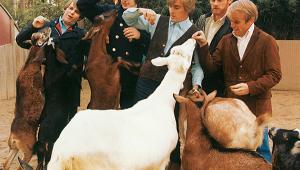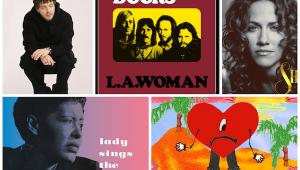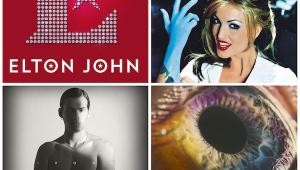...everyone KNOWS it would sound so much warmer and more natural on vinyl! (LOL!)
Ryan Ulyate Gives Us the Full Breakdown of His Stellar Dolby Atmos Mixes for Tom Petty’s Greatest Hits
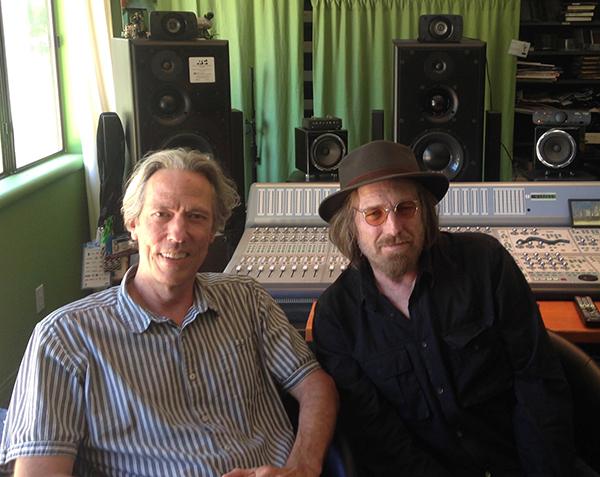
Tom Petty always, always knew how to ensure the music he made over the course of his long and storied career—whether it was with his longtime band The Heartbreakers, for other key passion projects like Mudcrutch, or as a titular solo artist—would sound the absolute best it could during playback, regardless of the format. In April 2015, Petty doubled down on that concept, as seen in this officially posted YouTube clip of him discussing the various benefits of hi-res audio.
It’s worth quoting the following passages from that above clip to further illustrate the point. “It’s gonna change everything for you, musically,” Petty observes. “You’ll actually hear what we hear in the studio, sitting behind the console—which would make me very happy. . . . While I’m kicking my ass to give you the highest fidelity there is, I’d hate for you to miss out on that. . . . I want you to hear what I’m hearing when I produce the record for you.”
In essence, Tom was perpetually thinking about future-proofing his music for any format to come down the pike to keep his in-studio intentions intact for lifelong fans and new listeners alike, and most especially how it could sound as good as possible, if not better—topics he and I discussed together on more than one occasion before his sad passing in October 2017.
Fast-forward to October 2020, when his longtime engineer and production partner Ryan Ulyate mixed Petty’s rightly acclaimed November 1994 solo album Wildflowers in Dolby Atmos, further enhancing our enjoyment of what was already there and readily apparent in the music itself. (You can read my discussion with Ryan about mixing
All of this brings us to the present day of late 2022, wherein Ulyate has done it yet again by mixing all 18 tracks of Tom Petty and The Heartbreakers’ November 1993 Greatest Hits collection in Dolby Atmos. These truly immersive mixes are currently available by way of Geffen/UMe via Apple Music Unlimited, Amazon Music, and Tidal. (While there are no plans for Blu-ray representation of any/all of these vital 18 Atmos mixes as of this posting, here’s hoping a physical manifestation will happen at some point down the line, if we all ask for it nicely enough.)
Ulyate’s directive for putting TP&THBs’
As an inveterate and unapologetic Atmos listener, I must concur with that premise, for Ulyate has fulfilled his sacred immersive mission quite handily all throughout Greatest Hits. Recently, Ulyate and I got on Zoom together to discuss how he created the stems for these Atmos mixes by accessing the original masters, which songs on Greatest Hits are the most immersive and why, and what Tom himself would have said upon hearing his music in Atmos—perfect topics all for deep-dive coverage in this month’s Spatial Audio File. I’m learning to fly, around the clouds. . .
Mike Mettler: Back in 2020, we talked about how you got the main room in your home studio set up for Atmos. Have you modified anything in there since we last discussed it? Walk me through it.
The other thing I’ve got that’s really important is a little Sennheiser headphone amp. I’m running the output through Dante [networking] into an Apple MacBook through Logic [audio mixing], so I can listen to Apple Spatial [Audio] at the same time as Dolby Binaural, because you’ve gotta work for all three formats now. And the mixes have to sound ok in all of them.
Mettler: Yeah, you’ve got to be consistent across the board. What’s your overall philosophy for how you mixed Tom Petty’s music for Atmos?
I think I probably paid more attention to really making sure I had all the elements and to keep it all really, really honest to the original intent of each of those [original source] albums. Because you’re pulling a couple tracks off every album, you’ve got different producers, different engineers—you’ve got different everything.
More than anything, you’ve got people who feel these songs are the crown jewels. It’s in people’s hearts—and it’s really incumbent on me, I felt, to get it right, take my time, and not miss anything. You know—don’t miss that little tambourine on the third verse, or whatever. All those details are really important.
I probably spent more time dialing into the original mixes, and getting as close as I could to those mixes, before I even thought about pulling it into immersive, and moving things into different speakers.
Mettler: What was the first track you did in Atmos for this project?
As you know, I have access to all the multitracks. There is nobody making stems for me. These are all handcrafted little stems from this guy [points to himself], and his little handcrafted shop—and that’s the way I like it. I think the most important thing about getting this stuff right is you’ve gotta go right to the source, and make sure you’ve got exactly the right stuff. Sometimes, that means there are some tracks they didn’t use [on the final mixes of the songs that were originally released], so you don’t use them. You really have to be a detective, in a lot of cases.
Mettler: You really do. And if I remember correctly, there was one time when I was there with you in your studio around the time you were working on Mojo [in 2010], and the master tapes for Torpedoes literally arrived right around the same time. I think we took a photo of them because they had just arrived, and you hadn’t even started working on them yet.
Mettler: And, just like you said, these are the crown jewels. You got the actual masters of that very important album in hand—and for all of Tom’s other albums too. These are the tapes. Essentially, these are the “Abbey Road versions” of Tom Petty material, if that’s a fair equivalency.
We had remastered the entire catalog for hi-res with Chris Bellman a few years ago, so I had those really good hi-res masters to compare. Those are the mixes I matched my mixes to. From those mixes, after I matched them exactly, I printed out all the stems, and we were able to go into Atmos Land—or Immersive Land, so to speak.
Mettler: In “Refugee” specifically, was there something you were able to pull out, or feature better in Atmos? Right now, I’m thinking about the way Benmont Tench’s organ comes in at certain points and then goes into the background, and also the way all the guitars roll out.
You get inside it, and you realize, “Oh, this is actually a 12-string combined with a 6-string.” And when you’re able to get inside of it in immersive, you’re able to split ’em out. It’s really kind of cool, because the sound you hear coming out of two speakers, normally—it now gels together in your brain (chuckles), because it’s coming from all around you. Now, you get to hear a little more of the individual separation between everything, but it still creates this thing around you, and it just puts you in the middle of it all.
Mettler: Speaking as a listener on the receiving end, these Atmos mixes also help me visualize where everybody in the band was positioned in the studio, whenever and wherever the songs were originally cut. Tom’s here singing and playing guitar, Mike [Campbell]’s here on guitar, Ben [Tench]’s over there on keyboards, Stan [Lynch]’s on drums back there, and whether it’s Howie [Epstein] or Ron [Blair] on bass, I don’t ever feel like I’m in a weird space when I’m listening to these mixes.
Mettler: Are there any special “in the clouds” moments you want to highlight for people? I have my favorites, of course, but I want to hear yours.
Mettler: You just read my mind.
That’s where the really interesting layering of parts comes in. This thing that makes these sounds, like the guitar riff in “Free Fallin’”—that suspended riff—it’s about three or four guitars that give you that sound. It’s so fun to be able to spread them out, and put you in the middle of those guitars.
The other thing that happens on “Free Fallin’” [originally from Full Moon Fever] is Jeff’s influence with the background vocals. There are a lot of background vocals, and I think they’re pretty much mostly Jeff and Tom doing the (sings), “Free fallin’ / I’m free fallin’,” and the “Whoa-oh-ohh,” and all that stuff.
The way they recorded that is, Jeff would take a stereo mix of the track, and they’d put it on a separate piece of 24-track tape. On that 24-track tape, they’d record 16 different tracks of Tom and Jeff on one track together, 16 times—really dense. And then [engineer Don Smith] would take that and mix it down to 2-track, and fly it back into the master.
Well, I went back and found all 16 of them—and I put those guys up in the height speakers. “Free Fallin’” is really fun too, because you’ve got this amazing Tom/Jeff choir going on up there. It definitely is a way of hearing it that you probably haven’t heard before. It's a little detail, but those backing vocals are so nice on the [original] record—and now you get to feel them a little bit more, and appreciate them even more, in this format.
Mettler: agree. I love hearing that Tom/Jeff choir up in the clouds. The only issue I have with what you just said is I think it’s much, much more than just a “little” detail. (laughs)
Mettler: Yeah, that works. I can agree with that. You also had a lot to work with when it came to the tapes from the band’s early Shelter Records era, right?
A perfect example of that is “Breakdown” [originally from the band’s November 1976 self-titled debut, Tom Petty and The Heartbreakers]. “Breakdown” is a very, very simple track—it’s spare and haunting, and restrained and emotional, and all that stuff. It works really well in Atmos. Sometimes, these very simple things, when you create some space around it and you live in it, make it very compelling. It just heightens the emotion of it. That’s another one that really stands out for me.
It’s also got some great background vocals from Phil Seymour, a guy from the Dwight Twilley Band, because those guys were also on Shelter, and they all hung out. It’s Tom and Phil and some other guys from the band there, and you hear those vocals in a really cool way. I put those a little bit more in the back. You’ve got guys coming at you from all directions, and it’s really fun. You also get some little finger snaps. They’re subtle little things, but when you spread ’em out, you put people in that sonic landscape.
Mettler: You sure do. Is there one track you haven’t done in Atmos yet from Tom’s entire catalog—the one where you’re like, “This is something I want to get to eventually, something I really feel might be something else in immersive”?
It’s always the family’s call for what we’ll do next, but if we do a good job with it, then we’ve taken the catalog and we’ve raised the bar for the whole thing—and then that catalog can live on for years in this really compelling way.
And we’ve also done it in a way I know Tom would dig. Whenever I’ve been sitting in my room listening to it, I’ve said to myself, “Damn, I wish he was here, because I know he would just love this.” I’d call him up and go, “Come on over, and listen to this!”
Mettler: What would Tom’s verbal response have been to you after you put up, say, “Free Fallin’” in Atmos? Knowing Tom, I already have a guess—and you don’t have to censor it. (laughs)
When you love music, that’s the thing that motivates you—and Tom loved music. That was his life. You know, if you can hear it better, and feel it better, and just be there in that sacred space, then of course you’re gonna love it.
Mettler: Yeah. It makes you feel a whole lot better, to borrow a title not so out of the blue.
TOM PETTY AND THE HEARTBREAKERS
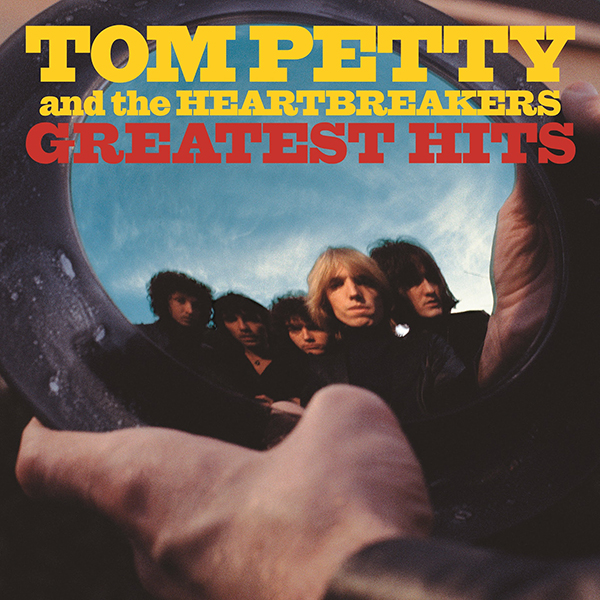
Ryan Ulyate: I’ve got a 7.1.4 setup, with ATC SCM50 speakers for the 7’s. The 4’s are ATC SCM12A Pros up at the top for the height. And then I’ve got Bag End as the subwoofer, for the “thumpy thumpy.” (chuckles)
Ulyate: The mission with Tom Petty and The Heartbreakers, and especially what we did with the Greatest Hits, was to take this music people have loved and put into their hearts for [almost] 50 years. . . (slight pause) and not screw it up! (both laugh heartily)
Ulyate: I think it was “Refugee.” I had done “Refugee” in 5.1 before, when we did a 5.1 version of [October 1979’s] Damn the Torpedoes back in, I want to say, 2010. [MM confirms: Indeed, Damn the Torpedoes was released in 24-bit/48kHz 5.1 on Blu-ray in November 2010.] I had the stems I made back then for that, and I used them as the jumping-off point—and then I went back to everything else.
Ulyate: That’s right. [MM adds: Found that photo in my files—see below!]
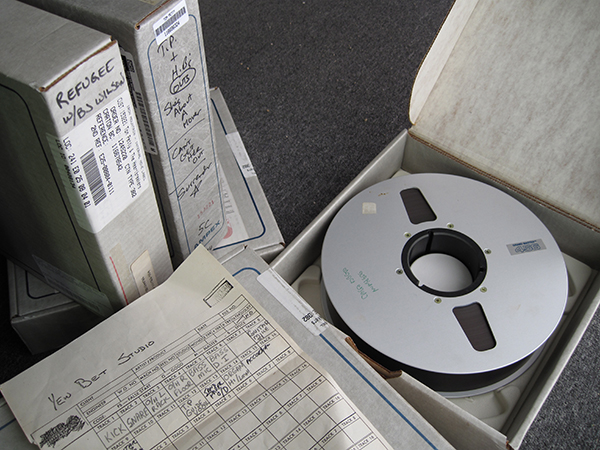
Ulyate: Yeah! Yeah, it is. And that’s what we were able to work with. At some point, Universal had done some really good transfers, so I just got the raw files from Universal for some of them. They were all transferred at 24-bit/96k; really pristine. No messing about; really good signal chain. In some cases, I actually baked the tapes, and really went back to the multitracks. I knew I had the real stuff, so I had good things to work with.
Ulyate: Well, I think you find the things that create this “sound” are, in fact, just layers of instruments. They’re so skillfully put together, and they just make this impressive thing, which is the whole song.
Ulyate: Good. You don’t have to work very hard to create some kind of thing that’s not on these records already. The records have got everything already there. Like I said, all you have to do is just not screw it up. You’ve gotta be really respectful of it. The music will do the work.
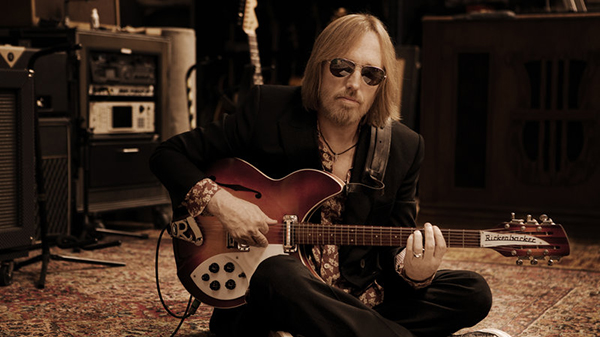
Ulyate: Well, yeah, there are some fun ones. I mean, it was really fun to get into the Jeff Lynne era—you know, [April 1989’s] Full Moon Fever and [July 1991’s] Into the Great Wide Open. [Lynne, the noted impresario of Electric Light Orchestra and onetime bandmate of Petty’s in The Traveling Wilburys, co-produced both of those albums along with Petty and Mike Campbell.]
Ulyate: Those are really different records because of Jeff’s way of producing where, basically, you’re building it up track by track. It’s not like the whole band’s playing at the same time. They built these things kind of vertically, you know? (both laugh)
Ulyate: Oh, ok. (chuckles) It just gives you a deeper experience of something you love, no matter where you hear it.
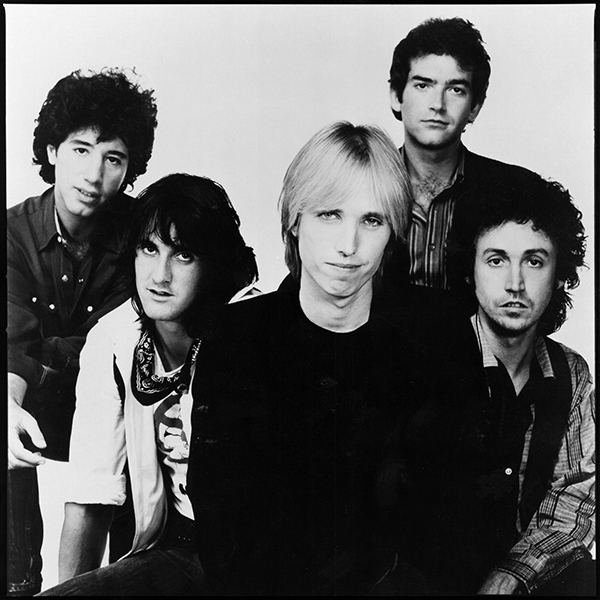
Ulyate: Oh yeah. They started out on 16-track when they were on Shelter [the label that released TP&THBs’ first two albums in 1976 and 1978 before they shifted over to Backstreet/MCA for the aforementioned Damn the Torpedoes]. I felt like I had enough separation to do what really needed to be done for this album.
Ulyate: Besides all of it? Honestly, I want to get to all of it. Every bit of it there is, that’s what I want to do. That’s my position. I want to try and do as much of it as we can, because I just love it so much. I know how it makes me feel when I hear things in immersive, and I know it’s gonna blow other listeners’ minds when they hear these songs in a different format. I think that’s what I like about it the best.
Ulyate: He’d probably say, “That’s f---ing great,” you know? (both laugh) I know that’s what I said! (more laughter) That’s what most people say, because that’s just what it is.
Ulyate: Yes. I really believe in this immersive format. And, you know. . . (slight pause) I just know Tom would too.

GREATEST HITS (in Dolby Atmos)
available on Apple Music Unlimited, Amazon Music, and Tidal
1. American Girl
2. Breakdown
3. Listen To Her Heart
4. I Need To Know
5. Refugee
6. Don’t Do Me Like That
7. Even The Losers
8. Here Comes My Girl
9. The Waiting
10. You Got Lucky
11. Don’t Come Around Here No More
12. I Won’t Back Down
13. Runnin’ Down A Dream
14. Free Fallin’
15. Learning To Fly
16. Into The Great Wide Open
17. Mary Jane’s Last Dance
18. Something In The Air
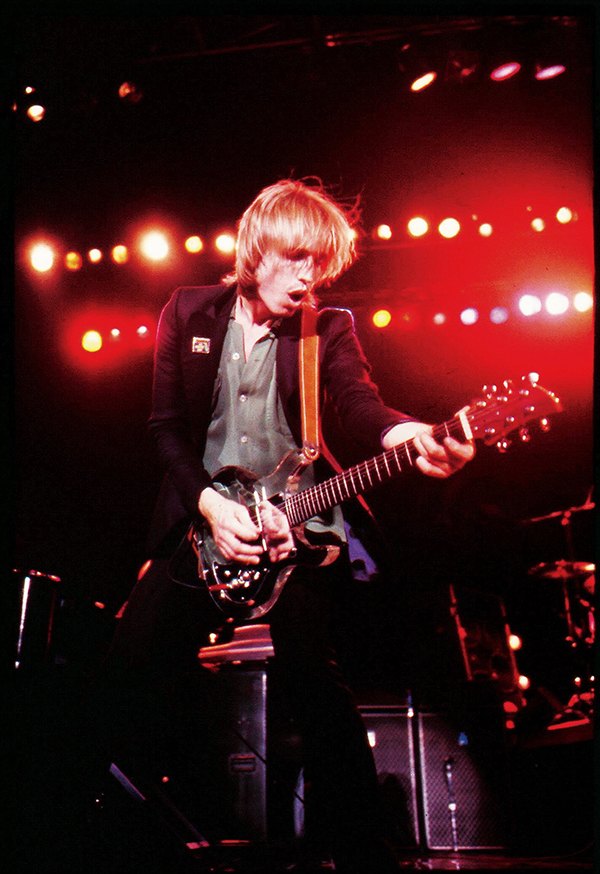
- Log in or register to post comments


editpad.pro autosave assistance make sure that you never part with your work. This characteristic mechanically saves your progression at unconstipated intervals, so you don't chalk up to apprehension approximately losing your collections outstanding to unforeseen emanations according to effectiveness outages or transaction crashes. The peacefulness of consciousness if by this characteristic is a substantial benediction of victimisationing Editpad, exceptionally for those working on far-reaching projects.
